By Bill Quattrucci – Owner of BiCO Performance Jigs
I’ve been bass fishing and running tackle shops for the majority of my life, and giving advice to anglers that are interested in getting started jig fishing has always been my favorite part of the job. I consider myself a well-rounded fishermen, but there’s no area I have more on-the-water experience with than jig fishing for bass. I started out fishing Stanley Jigs back in the early 90’s, before I started designing my own baits.
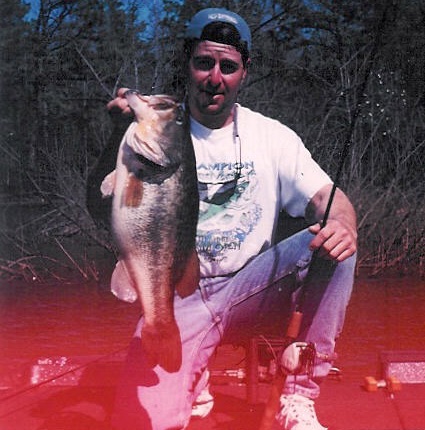
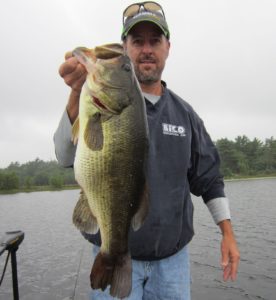
Fisherman getting started with bass jigs frequently ask me for advice and where to get started, so I decided to put together this list of tips for people to use as a resource. Because it’s so hard to say one tip is more important than another, they are not in order of importance. One thing I can tell you is that if you apply these tips and techniques to your jig fishing you will significantly improve your success.
1. The Right Equipment
The first thing you need to do to be efficient when jig fishing for bass is get yourself the right tackle. I typically recommend at least a seven foot casting rod with heavy power and a fast to extra-fast action tip. Using a longer rod allows you to pick up more line quickly when raising the rod tip. These specifications will give you the pulling power, as well as the sensitivity required for detecting bites and landing bass in all types of cover.
For a reel I suggest a low profile baitcaster with a fast retrieve, preferably with a 6:1 or faster gear ratio. Even some of the newer high-speed reels in the 7:1 or 8:1 gear ratios are perfectly suited for jig fishing. These fast retrieves allow you to pick up slack line quickly so that you’re better prepared to detect a bite and set the hook. They’re also better for when using flipping and pitching tactics, since you can quickly retrieve the jig between targets.
And lastly, for line I use twenty pound test fluorocarbon, 20lb XPS Line to be exact. I have fished every brand of line and find this lower cost XPS Fluoro to be every bit as good as the more expensive brands. Fluorocarbon is the best line for jigs in my opinion because it’s clear, it sinks, stays taut underwater, and is much more sensitive than monofilament line. Switching from mono to fluoro will result in not only more bites, but more detected bites as well.
Braid is acceptable too if you’re fishing stained water, in which I would suggest forty to sixty-five pound test. You might also want to consider using a fluorocarbon leader. Regardless of line type, I always tie my jigs with a palomar knot.
2. Approaching Targets
How you approach a target can make or break a spot. It can be very tempting to fire away when you see some good looking cover, but it’s so important take the time to align yourself at the right angle and distance from the target you’re casting at. It’s all about setting yourself up for a perfect cast and jig presentation.
While you’re positioning yourself for entry, you should also be thinking about how the fish is going to come out of the cover that you’re casting in to. So when you are preparing to cast in to a high percentage spot, you need to make sure you are putting yourself in the best position to be able to horse the fish out of there.
It’s also important to be as stealth as possible. I believe if you’re able to see a bass then the bass is able to see you, so try to keep a good distance away. Also try to ease into areas quietly, especially on calm days when foreign noises will travel further underwater.
3. Casting Accuracy
Making accurate casts and pitches on a consistent basis takes time and practice, but it’s such an important skill to have when you’re jig fishing for bass around cover. I personally feel that the first cast/pitch at a target can make or break a spot.
The difference between your jig landing three inches from the cover you’re targeting, and three feet is greater than most novice fishermen realize. And I find that the larger the bass the more true this is.
Having good casting and pitching skills also allows you to put your jig in hard to reach areas, spots where not all fishermen are going to be able to safely land their jigs. Not only does it present your jig to more bass, it will reduce the chances that you’re going to hit something like a dock and make noise that spook the fish, or end up stuck in a tree on shore.
4. Maintaining Connection
Maintaining a constant physical connection with your jig is the most important rule in jig fishing. This is the factor that separates jig fishing from fishing with most other bass lures. If you can’t feel what’s going on with your jig then you are leaving way too many opportunities for missed bites. The way to do this is by not leaving too much slack in your line. Watching your line at all times and keeping your line tight will allow you to feel even the softest bites.
Not only is maintaining a physical connection important, you should also be maintaining a mental connection with your jig. You should have full concentration on the bait while it’s in the water. Taking your focus off the jig for even a second can cause you to miss a fish, and you’ll never know what you missed. I have found that some of the hardest to detect bites have come from some of my biggest fish.
5. Vertical Presentation
You should always be aware of opportunities to present your jig vertically when fishing around cover, particularly during a tough bite. Many times bass that are inactive and uninterested in a horizontal presentation can be triggered into biting using a vertical presentation.
Instead of casting or pitching the jig to a target and pulling it away from the fish, you want to cast the bait and line over some form of cover. That way when the jig hits the bottom, the line is going up vertically to where it folds over the cover. This then allows you to jerk your rod and make the jig pop up and down in a vertical direction. Sometimes this is referred to as yo-yoing a jig.
This could be as simple as targeting a tree and picking an isolated twig on it to yo yo the jig over. This can work with any type of cover imaginable, could be a tree, a dock, a patch of pads, or any type of vegetation. Sometimes even on an ice edge, they can all create the opportunity for a vertical jigging presentation. And understanding the potential of presenting a bait vertically can at times be the difference between striking out and putting a few fish in the boat.
If you found this information useful, check out our Jig Fishing Tips & Techniques page.
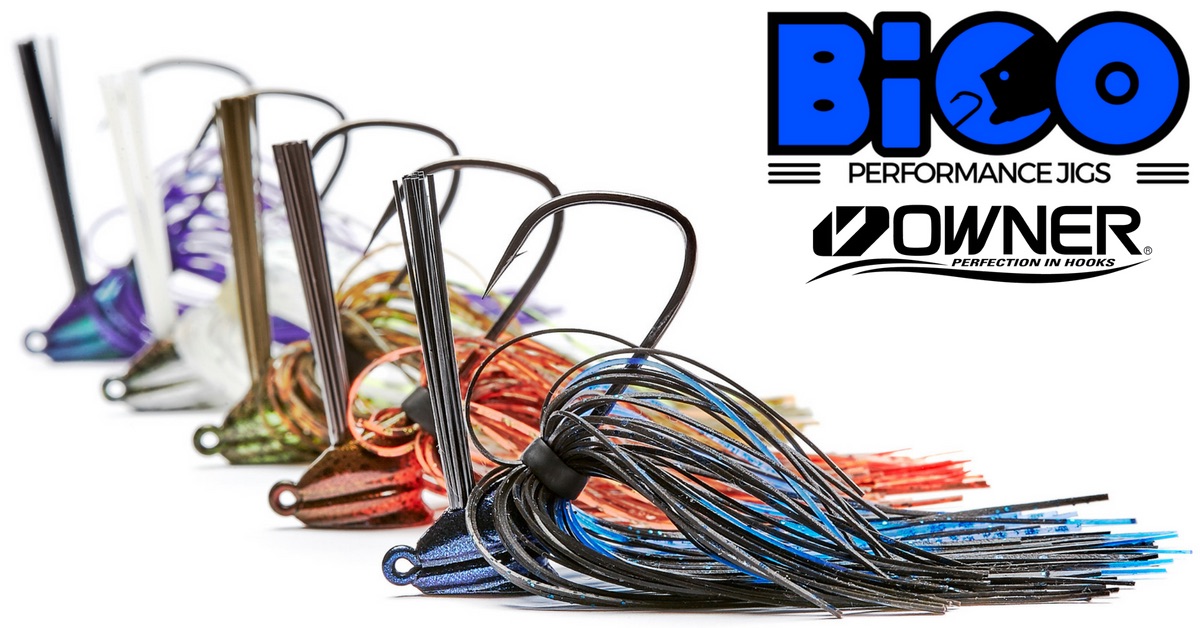
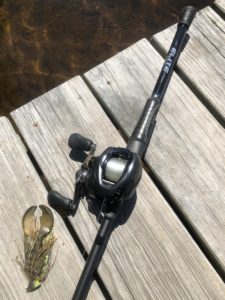
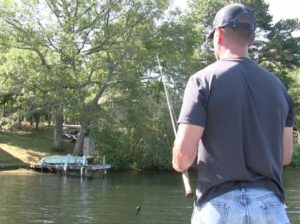
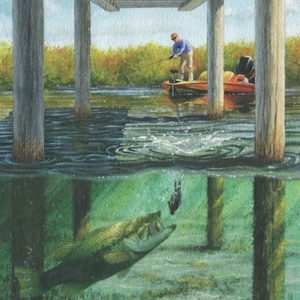
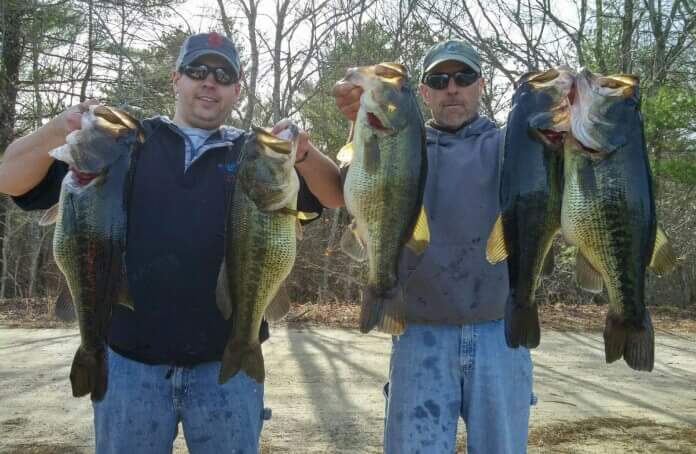

New to jig fishing for bass. Really appreciate the advice.
Very helpful. Thanks
very helpful!!